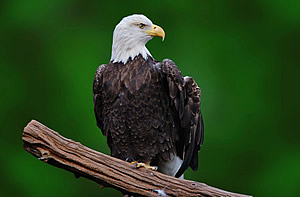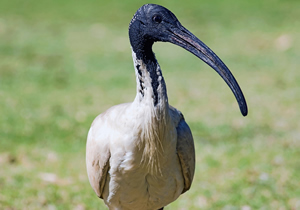
One of the NTU Peregrine Falcons
In the first 14 days since we launched our falcon webcam for 2012, we have attracted almost 30,000 unique visitors from 61 different countries. Unsurprisingly, most visitors are from the UK (94.45%) around half of which (46.58%) are from the Nottingham region.
As a Nottingham lad, for me the great thing about this project is that we can watch these amazing birds raise their family right in the middle of a city centre which we know so well. It’s intriguing to think that while people do their shopping or go for a meal in the nearby restaurants, there is a completely different circle of life happening a hundred foot or so above our heads.
The sheer range of visitors we have seen from other countries prompted me to wonder what kind of birdlife can be found in their parts of the world. The peregrine falcon is the world’s most widespread bird of prey and can be found nearly everywhere on earth except the extreme polar regions, very high mountains, and most tropical rainforests (the only major ice-free landmass from which it is entirely absent is New Zealand). But there are a lot of other birds out there in our viewers own countries which are unique to their environments.

The American Bald Eagle
The biggest non-UK portion of our visitors for the first two weeks has come from our neighbours in the USA (1.54%). America’s national bird and symbol is the Bald Eagle, a bird of prey found mainly in the northern states. It’s significantly bigger than our peregrine falcons, with a body length of 70–102cm and a wingspan typically between 1.8-2.3m. By comparison, the peregrine falcon usually has a body length of 34-58 centimetres and a wingspan of 80-120 centimetres – we think ours are around 40-45cm in length.
Unlike our falcons (who feed almost exclusively on medium-sized birds) the diet of this eagle is usually fish, trout and salmon. It’s nowhere near as fast either, only managing to reach speeds of around 35–43mph when gliding and flapping, compared to the peregrines which can reach over 200mph during their characteristic hunting stoop.

The Marabou Stork
Moving across the South Atlantic ocean, a small portion of our traffic (0.03%) has come from South Africa, which is famously home to the Marabou Stork. This is a large wading bird which can be found in both wet and arid habitats, often near human habitation. It is nicknamed the ‘undertaker bird’ because of its cloak-like wings and skinny white legs. A relatively large bird, specimens can reach 152cm (over three times as big as our falcons). Unlike most storks, the Marabous fly with their necks retracted like a heron – but they are not known for their speed. Their feeding habits rely more on their guile and their diet is varied amongst scraps, carrion, fish, frogs, insects, eggs, small mammals and reptiles such as crocodile hatchlings and eggs. They have also been known to eat other smaller birds.

The Australian White Ibis
Australian visitors have accounted for 0.1% of our traffic so far and among their native birds is the Australian White Ibis. When I was visiting Brisbane a few years ago, I sat outside the Museum eating a sandwich and a flock of these descended upon me to scavenge for crumbs, like pigeons would in the Market Square. These birds are usually around 65–75cm long and to me look like something out of an Edgar Allen Poe novel, so you can imagine it caused me mild panic to be surrounded by a hungry flock of them (much to the amusement of the more street-wise locals). Although historically the Australian White Ibis were rare in urban areas, many have now immigrated into the major east coast cities and debate continues as to whether they should be considered as a pest or as a vulnerable species (though they are currently ranked as Least Concern on the ICUN red list).
The full list of 61 countries we’ve had visitors from is below. If you have any experiences of birdlife in those countries, or thoughts to share, please post them in the comments below – we’d love to hear them!
Country
United Kingdom
United States
Ireland
Netherlands
Germany
Canada
France
Spain
Finland
Australia
Belgium
Greece
Isle of Man
Italy
Switzerland
Russia
Sweden
Austria
Hungary
South Africa
Denmark
Hong Kong
China
Libya
India
Poland
United Arab Emirates
Bulgaria
Jersey
Japan
Malta
Norway
Romania
Slovenia
Tunisia
Turkey
Taiwan
Brazil
Cyprus
South Korea
Mexico
New Zealand
Slovakia
Thailand
Albania
Brunei
Czech Republic
Estonia
Croatia
Indonesia
Iraq
Iceland
Sri Lanka
Morocco
Nigeria
Portugal
Saudi Arabia
Singapore
Ukraine
Venezuela
Jared Wilson
NTU Digital Marketing Team















